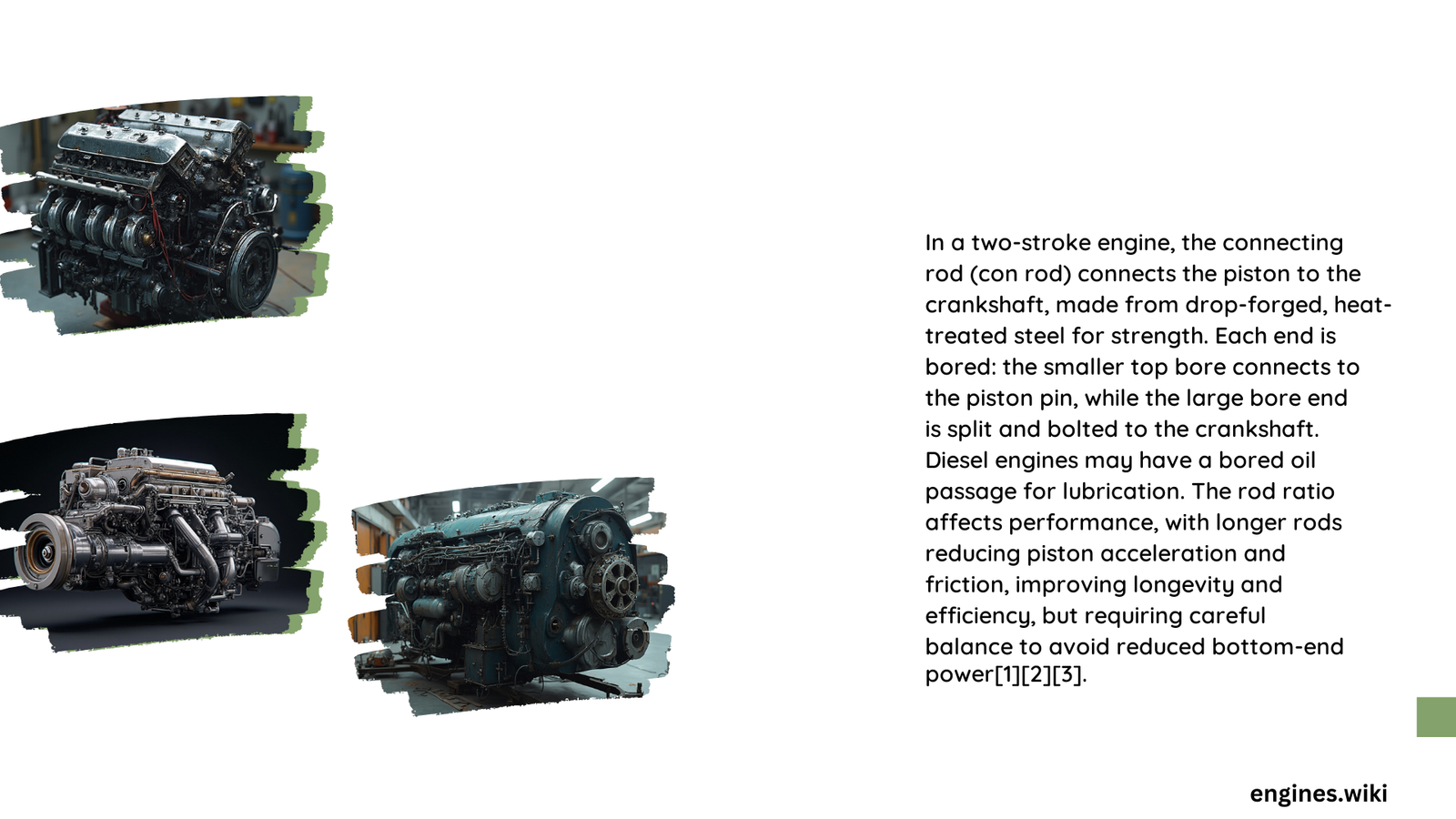The connecting rod serves as a critical mechanical link between the piston and crankshaft in two-stroke engines, translating linear reciprocating motion into rotational power. Its precise engineering determines engine performance, durability, and efficiency, making it a fundamental component that influences everything from power delivery to thermal management and mechanical stress distribution.
What Makes Connecting Rod Critical in Two-Stroke Engines?
Core Functional Dynamics
A connecting rod in a two-stroke engine performs multiple sophisticated functions:
- Motion Translation: Converts piston’s linear motion into crankshaft’s rotational movement
- Force Transmission: Transfers combustion energy from piston to crankshaft
- Structural Integrity: Withstands extreme thermal and mechanical stresses
Material Selection Strategies
| Material Type | Strength | Weight | Performance Suitability |
|---|---|---|---|
| Case Hardened Steel | High | Heavy | Standard Applications |
| Aluminum Alloys | Moderate | Light | High-Performance Racing |
| Titanium Alloys | Very High | Ultra-Light | Specialized Racing |
How Do Connecting Rod Dimensions Impact Performance?
Length Considerations
Connecting rod length significantly influences engine characteristics:
- Shorter Rods:
- Faster piston movement
- Enhanced throttle response
-
Higher mechanical stress
-
Longer Rods:
- Reduced lateral piston thrust
- Lower friction on cylinder walls
- Improved combustion efficiency
What Determines Connecting Rod Reliability?
Failure Prevention Mechanisms
Critical factors affecting connecting rod reliability include:
- Material Quality
- Manufacturing Precision
- Lubrication Effectiveness
- Thermal Management
- Operational Load Conditions
Why Material Selection Matters?
Comparative Analysis
Case Hardened Steel:
– Proven durability
– High load-bearing capacity
– Moderate weight penalty
Aluminum Alloys:
– Lightweight design
– Requires advanced surface treatments
– Higher manufacturing complexity
How to Detect Connecting Rod Wear?
Diagnostic Indicators
Warning signs of potential connecting rod issues:
- Unusual engine knocking sounds
- Increased vibration
- Reduced power output
- Excessive oil consumption
- Irregular engine performance
Performance Optimization Strategies
Engineering Recommendations
- Use high-precision manufacturing techniques
- Implement advanced surface treatments
- Select materials matching specific engine requirements
- Maintain optimal lubrication
- Regular inspection and preventive maintenance
Technical Specifications Checklist
- Ideal Rod Length: 1.5-1.8 × Stroke Length
- Recommended Material Hardness: 58-62 HRC
- Typical Weight Range: 250-600 grams
- Operational Temperature: -40°C to 300°C
Conclusion

Connecting rods represent a sophisticated engineering marvel in two-stroke engines, requiring meticulous design, material selection, and maintenance to ensure optimal performance and longevity.
